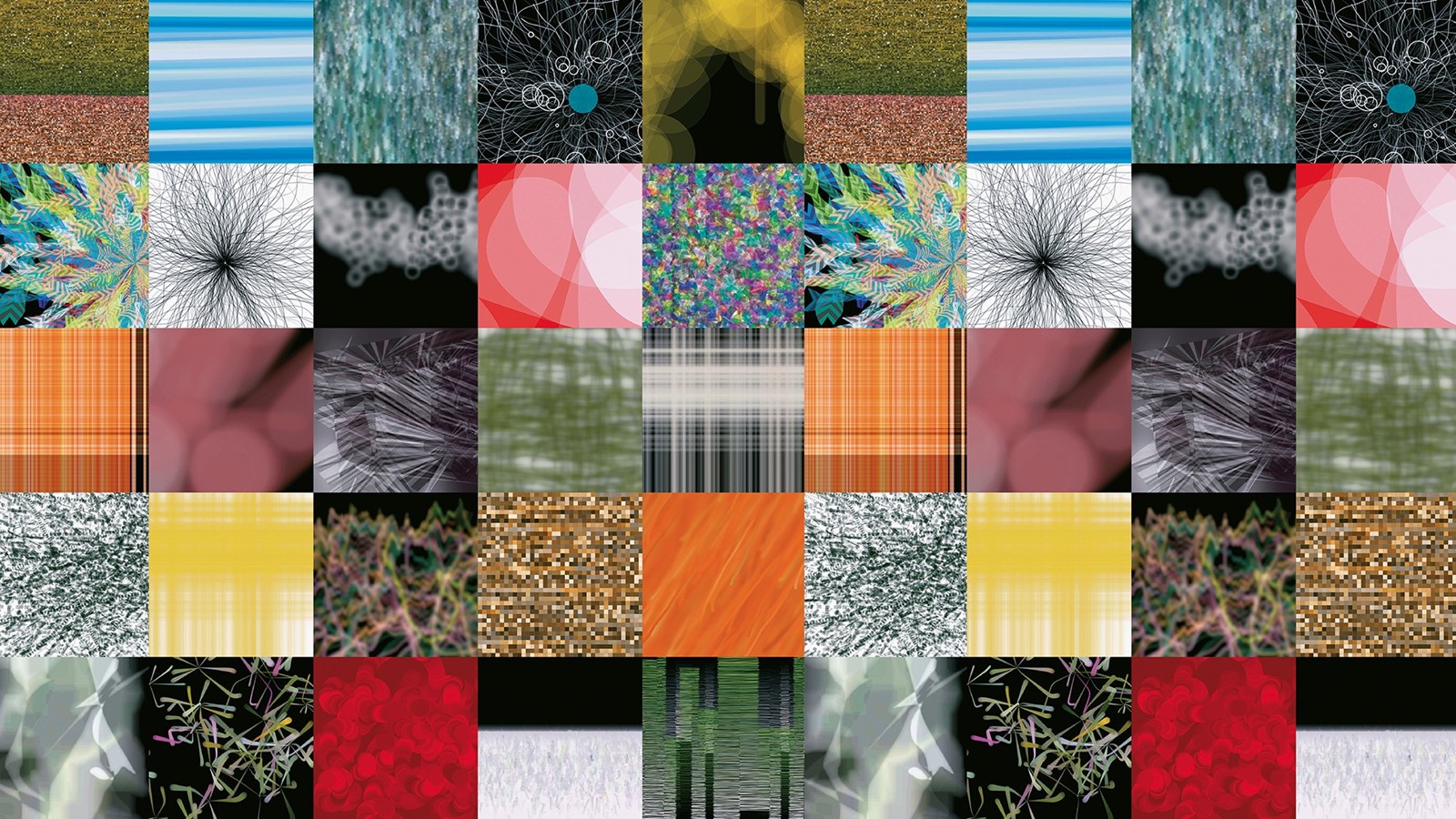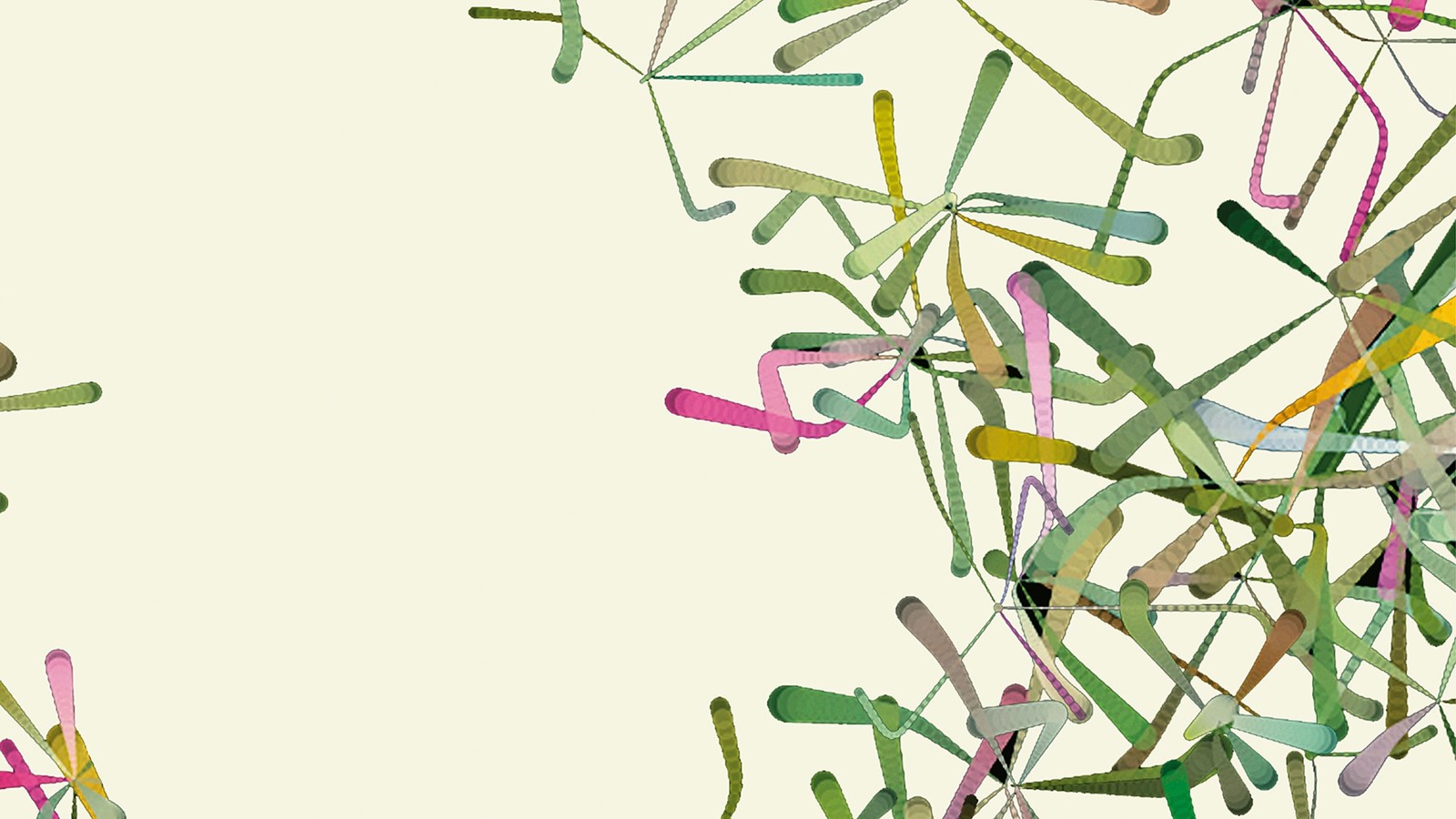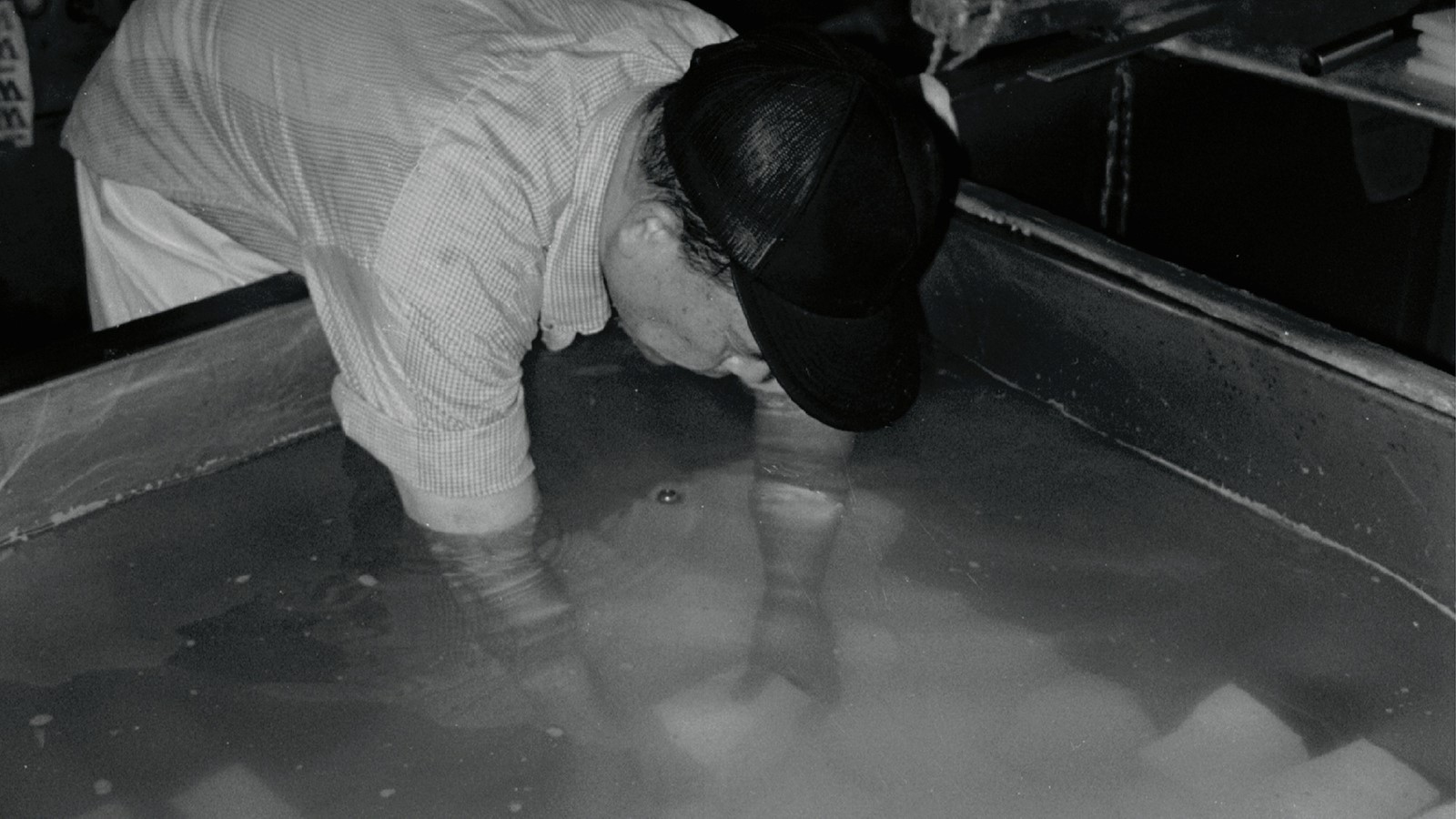He's been called the Da Vinci of the digital age and helped to inspire IDM music. Tech-artist John Maeda explains why human fallibility is at the core of his pixelated paintings
Taken from the March 2006 edition of Dazed:
Glowing in a darkened gallery in the Carrier Foundation in Paris, hang a series of John Maeda's ever-shifting digital paintings collectively titled Nature. Projected onto screens, pseudo-organic forms come and go, interwoven with passages of pure abstraction. On one, a green curtain of grasslike shapes slowly mutates into a multicoloured pattern of pixelated blocks that in turn melt into an undulating wave. On another, a hazy blob of colour, surrounded by a messy constellation of spills and splashes, sits pulsing on a white background, progressing through the spectrum from red, through purple, to blue – a real–time, constantly alive, action painting, the kind of work Jackson Pollock could only dream about.
Standing to one side, gently illuminated by the reflected light stands Maeda, a slightly built man with Japanese features, wearing a dark suit, shirt open at the neck, and glasses. Personable and enthusiastic, his manner is the opposite of that of a prima donna art star – surprising considering Maeda, a multi-tasking digital artist, designer, theorist and professor at the world-leading Massachusetts Institute of Technology (MIT), has been called the "Da Vinci of the digital age".
At the heart of his activities lies the conviction that the worlds of art and technology need to be brought together. "Technology needs to be humanised rather than optimised, and yet properly understood on its own terms," he explains. Maeda's belief follows on from media theorist Marshall McLuhen's dictum that, "We shape the tools, and they in turn shape us", and his own observation that the current gulf between technologists and creatives means that badly designed tools are shaping society too much.
“If someone has After Effects on Flash they can produce what I've made here, but it's flawed in a way only I know about. Flawed and thus human. My mind blood is in there” – John Maeda
As an artist, he has built on the work of Charles Csuri, the father of computer-generated art, who started experimenting with computers in the mid-1960s. Like Csuri, Maeda promotes the exploration of the mathematical and the "wonderful metaphysical properties" of the computer as a new medium that offers a new and vast field of creative expression.
As a designer, his books, manifestos and works rival those of Rem Koolhaas and Bruce Mau for their innovation, and have inspired a devoted following among students across the world. In both art and design, Maeda cautions against designers who migrate from real space to digital space without learning hard programming skills.
As he once pointed out, "When the output of a computer in the form of traditional visuals is seen, it is trivialised because it is only one facet in that conceptual space." At the same time, he believes that technologists need to stop obsessing with speed and complexity and think more about real human needs.
All of this, Maeda carries over into his theory and teaching, challenging the technological world to re–think its priorities and develop a generation of what he calls "humanist technologists" a breed of creative visionaries and technological craftsmen. He is increasingly animated by the need to lobby governments and corporations to foster and encourage creativity. In a world that is increasingly shaped by the internal logic of technology, Maeda wants balance – technology with a human and artistic soul.

So broad are his activities, that Maeda's influence ranges from shaping the latest tech products on the market to inspiring new cultural forms. In November 2005, he picked up the Raymond Loewy Foundation's Lucky Strike Designer Award for his work on simplicity. Past winners of the prize includee Philippe Starck, Donna Karan and Peter Lindberg.
On a commercial level, Maeda deplores designers who focus on making each successive product complicated regardless of the users' needs. Tellingly, big electronics brands like Philips, Sony and E-Plus among others, sent their employees to Maeda's simplicity workshops run at MIT.
At the other end of the spectrum, Maeda's insistence on investigating the particular qualities of the computer has helped inspire trends like Intelligent Dance Music, a term coined in the early 90s for experimental electronica that placed the emphasis on listening rather than dancing. As Richard Devine, one of the top producer/composers on the current IDM scene explains: "For me, the most impressive element to Maeda's work is that he completely codes all his own applications to create his designs. He uses the process of programming to describe the structure of a machine as a sequence of textual codes, which when brought to life in the 'mind' of the computer performed specific tasks. These tasks executed hundreds of complicated mathematical computations that outputted lined massed objects that look real and organic to the human eye. It has directly influenced my work."
“Technology needs to be humanised rather than optimised, and yet properly understood on its own terms” – John Maeda
Similarly, ex–student and now award winning artist, composer and designer Golan Levin, has absorbed Maeda's principle of creative exploration of the digital by merging visuals and music in multimedia installations such as "Audiovisual Environment Suite" and "Scribble". "I felt what was needed was a true melding of the artistic sensibility with the engineer," he recalls. "I set out to develop myself as a true artist engineer, using the computer as my medium." After a long and involved training in the separate worlds of arts and technology, he succeeded.
Brought up by his immigrant Japanese father, Maeda studied computer science at MIT before spending five years away from the computer world at an Japanese art school in Tsukuba where he learnt traditional painting. The digital publishing revolution gave him the chance to combine his talents, and he was invited to teach at MIT's pioneering Media Lab.
However, that might not be apparent from a casual glance at Maeda's work. Just as the wild messy paintings of the Abstract Expressionists were subjected to "my child could do that" public criticism, Maeda's digital paintings are open to attack – along the lines of "it looks like my screensaver". Maeda accepts this but only up to a certain point. "If someone has After Effects on Flash they can produce what I've made here, but it's flawed in a way only I know about. Flawed and thus human. My mind blood is in there. I want to honour that aspect of humans in digital space. It poses the question 'Can the human exist in the digital world?'"
Just as the fluidity of abstract painting is the product of skill and practice, so too are Maeda's works. To create them, Maeda developed new computer programmes. "I wanted a system for painting animated images in a simple gestural manner," he explains. "So I wrote the code and assembled the results as moving images. It took 50 or so modifications to create 20 to 30 seconds of content. It was like walking through a forest looking to capture that perfect moment."

Maeda's attempt to bridge that gap ultimately reaches beyond art and design, almost to the extent of sounding like a warning note to humanity about the future consequences of its present failures. As philosopher John Gray wrote in his recent Straw Dogs, "Technology is an event that has befallen man", implying that it is a phenomenon that humans can never hope to truly control.
While it is the sci-fi industry's job to dream up alarmist dystopias, Maeda is aware that battles between the logic of technology and the interests of humanity have already been fought and lost. "Jerome Wisener is the reason that MIT is such an enlightened place," he says. "He worked on the Manhattan Project (which developed the US's atomic bomb) as a young physicist, and spent the rest of his life atoning for it. As Science Advisor to JFK and as President of MIT in the 70s, he argued that if we leave technology alone it will play out an endgame on its own terms.
"I was talking to the Director of HP Labs (Hewlett Packard's R&D laboratories) about this and he pointed out that most of the major research labs across the world were until recently, run by conscientious scientists of Wisener's generation. Now they've all gone and have been replaced by people whose values have been shaped by the free market.
"This was brought home to me when a few months ago, I was sitting at a table in MIT, and I heard this professor saying, 'I just got $30 million dollars and I'm going to be able to bring together the best minds in biotech. It'll be just like the Manhattan Project.' So I said, 'Is that good?' and he said, 'What do you mean?' He just didn't get it."
By influencing a generation of digital designers and technologists, Maeda is helping redress the balance in a world in which people are increasingly alienated by technological saturation. "I was recently asked by The New York Times, 'What is the future of science?' In response, I wrote 'Art is the science of enjoying life.'"

